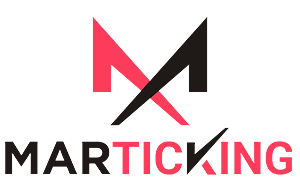In the rapidly evolving world of digital business, Software-as-a-Service (SaaS) companies are on the rise. As competition intensifies, it’s crucial for SaaS providers to implement effective SEO strategies to improve their online visibility, attract qualified leads, and ultimately drive conversions. This guide will walk you through the essential steps of SaaS SEO, enabling you to optimise your SaaS platform for search engines and outperform the competition.
Defining SaaS SEO
Software-as-a-Service (SaaS) SEO refers to the process of optimising a SaaS platform’s online presence to improve its visibility and ranking on search engine results pages (SERPs). The goal is to attract organic traffic, increase brand awareness, and ultimately drive conversions.
Importance of SEO for SaaS Companies
SaaS companies operate in a competitive digital landscape. Effective SEO can help them stand out and connect with potential customers actively searching for solutions. High search engine rankings lead to higher organic traffic, reducing the dependency on paid advertising and providing a consistent flow of leads.
Keyword Research for SaaS
-
Identifying Relevant Industry-Specific Keywords
Begin by identifying keywords that accurately represent your SaaS offerings. Research industry-specific terms, product names, and user pain points. Use tools like Google Keyword Planner, SEMrush, or Ahrefs to discover relevant keywords.
-
Long-Tail Keywords and User Intent
Long-tail keywords often convert better as they reflect specific user intent. For example, “cloud-based project management software for remote teams.” Understand the searcher’s intent behind each keyword and tailor your content accordingly.
-
Utilizing Keyword Research Tools
Leverage keyword research tools to analyse keyword competitiveness, search volume, and related terms. Create a list of primary and secondary keywords that align with your SaaS offerings and the problems they solve.
On-Page SEO for SaaS Websites
-
Optimizing Meta Titles and Descriptions
Craft compelling meta titles and descriptions that include relevant keywords and entice users to click. Keep them within character limits and ensure they accurately represent the content on the page.
-
Creating Unique and Valuable Content
Produce high-quality, informative, and unique content that addresses user queries and pain points. Regularly update your blog and resources section with valuable insights related to your SaaS niche.
-
Implementing Structured Data and Schema Markup
Enhance your search results with schema markup, which helps search engines understand your content better. Use structured data to highlight key information like reviews, pricing, and FAQs.
-
Optimizing URL Structure
Create clean and descriptive URLs that include relevant keywords. A clear URL structure makes it easier for both users and search engines to navigate your site.
-
Utilizing Header Tags (H1, H2, H3)
Organise your content with header tags. The H1 tag should reflect the main topic of the page, while H2 and H3 tags can be used for subsections and subtopics.
-
Internal Linking for SaaS Platforms
Implement internal links to connect related content within your site. This enhances user navigation, distributes link authority, and helps search engines discover and index pages.
Technical SEO for SaaS
-
Ensuring Mobile Responsiveness
With mobile-first indexing, ensure your SaaS platform is mobile-responsive. Test and optimise your site’s performance on various devices to provide a seamless user experience.
-
Optimizing Site Speed
Page load speed affects user satisfaction and SEO rankings. Compress images, minify code, and leverage browser caching to improve site speed.
-
Implementing SSL Encryption
Secure your site with an SSL certificate to establish a secure connection. This not only builds user trust but is also a ranking factor in search algorithms.
-
XML Sitemaps and Robots.txt for SaaS
Create and submit an XML sitemap to Google Search Console to help search engines crawl and index your pages effectively. Use a robots.txt file to control which parts of your site are accessible to search engines.
-
Handling Duplicate Content Issues
SaaS platforms may face duplicate content issues due to similar product descriptions or multiple variations of the same page. Use canonical tags to indicate the preferred version of the content.
-
Mobile-First Indexing and SaaS
With Google’s mobile-first indexing, prioritise your mobile site’s content and user experience. Ensure that both desktop and mobile versions have consistent content and features.
User Experience (UX) and SaaS SEO
-
Importance of UX for SEO
Google considers user experience as a ranking factor. A positive UX reduces bounce rates and encourages users to spend more time on your site, signalling its quality to search engines.
-
Responsive Design and Navigation
Design your SaaS platform to be responsive across devices and screen sizes. Intuitive navigation and clear pathways help users find what they’re looking for easily.
-
Clear Call-to-Actions (CTAs)
Strategically place CTAs throughout your site to guide users towards desired actions, whether it’s signing up for a trial, requesting a demo, or subscribing to your newsletter.
-
Minimizing Bounce Rates
Ensure your content is engaging and aligns with users’ expectations. Relevant, valuable content reduces bounce rates and improves session duration.
-
User Engagement Metrics and Their Impact on SEO
Metrics like time on page, bounce rate, and pages per session indicate user engagement. High engagement signals quality content and can positively impact SEO.
Backlink Strategy for SaaS
-
Earning High-Quality Backlinks
Focus on obtaining backlinks from authoritative and relevant sources within your industry. Quality backlinks improve your domain authority and search rankings.
-
Guest Posting and Thought Leadership
Contribute guest posts to reputable blogs and industry publications. Showcase your expertise to a wider audience and earn backlinks in the process.
-
Partnering with Industry Influencers
Collaborate with influencers or thought leaders in your niche. Their endorsement can lead to increased exposure and valuable backlinks.
-
Monitoring and Disavowing Toxic Backlinks
Regularly audit your backlink profile using tools like Google Search Console or Moz. Disavow toxic or spammy backlinks to prevent negative SEO impact.
-
SaaS Directories and Review Sites
List your SaaS platform on relevant directories and review sites. Positive reviews not only attract users but also contribute to local SEO efforts.
Local SEO for SaaS
-
Claiming and Optimizing Google My Business Listing
Even for online businesses, a Google My Business listing enhances local visibility. Claim your listing and optimise it with accurate information and visuals.
-
Localizing Content and Keywords
Tailor your content to include location-specific keywords if your SaaS platform caters to specific regions. This enhances your chances of appearing in local searches.
-
Building Citations and NAP Consistency
Consistent name, address, and phone number (NAP) information across online directories and platforms is crucial for local SEO. Build citations in reputable directories.
-
Customer Reviews and Their Influence
Encourage satisfied customers to leave reviews on Google and other platforms. Positive reviews enhance credibility and influence user decisions.
-
Targeting Location-Based Keywords for SaaS
Include location-based keywords in your content, meta tags, and descriptions to attract users searching for solutions in specific areas.
Content Marketing for SaaS SEO
-
Creating Valuable Blog Posts, Whitepapers, and Guides
Regularly publish content that addresses user pain points, offers solutions, and showcases your expertise. Valuable content attracts organic traffic and builds authority.
-
Incorporating Multimedia (Infographics, Videos)
Diversify your content with multimedia. Infographics and videos can explain complex concepts, engage users, and encourage sharing.
-
Using Content to Address User Pain Points
Identify common challenges faced by your target audience and create content that addresses these pain points. This positions your SaaS platform as a problem-solving resource.
-
Promoting Content Through Social Media and Email Marketing
Share your content on social media platforms and through email newsletters. Engage with your audience and encourage them to share your content as well.
-
Evergreen vs. Time-Sensitive Content for SaaS
Balance evergreen content (timeless information) with time-sensitive content (latest industry updates). Evergreen content maintains its value over time, attracting consistent traffic.
Monitoring and Analytics for SaaS SEO
-
Setting Up Google Analytics and Google Search Console
Install Google Analytics to track user behaviour, conversions, and traffic sources. Google Search Console helps monitor your site’s performance in search results.
-
Tracking Keyword Rankings and Organic Traffic
Monitor the performance of your target keywords in SERPs. Analyse organic traffic trends to understand the effectiveness of your SEO efforts.
-
Analyzing User Behavior on Your SaaS Platform
Review user behaviour metrics like bounce rate, time on page, and conversion rates. Identify areas for improvement in user experience and content engagement.
-
Conversion Tracking and Goal Setting
Set up conversion tracking to measure key actions on your site, such as sign-ups, trials, or purchases. Define goals and track their completion through analytics.
-
Adjusting Strategies Based on Data Insights
Regularly analyse the data gathered from analytics tools. Use insights to refine your SEO strategies, optimise underperforming pages, and prioritise high-performing content.
Staying Updated with SaaS SEO Trends
-
Following Industry Blogs and Reputable SEO Resources
Stay informed about the latest SEO trends, algorithm updates, and industry news by following reputable blogs, forums, and SEO experts.
-
Adapting to Search Engine Algorithm Updates
Search engines frequently update their algorithms. Be prepared to adapt your strategies to comply with new guidelines and capitalise on algorithmic changes.
-
Embracing Emerging Technologies (Voice Search, AI)
Stay ahead by exploring emerging technologies like voice search optimisation and AI-driven SEO tools that can provide insights and streamline processes.
-
Competitive Analysis and Benchmarking
Regularly analyse your competitors’ strategies and performance. Identify gaps in your approach and implement successful tactics used by your competitors.
Conclusion
Mastering SaaS SEO requires a holistic approach that addresses both technical and content-related aspects. By diligently following the steps outlined in this guide, you’ll be well-equipped to enhance your SaaS platform’s online visibility, attract qualified leads, and position your business as a key player in the ever-evolving SaaS industry. Stay committed to ongoing optimisation, measurement, and adaptation to ensure long-term SEO success for your SaaS platform.


